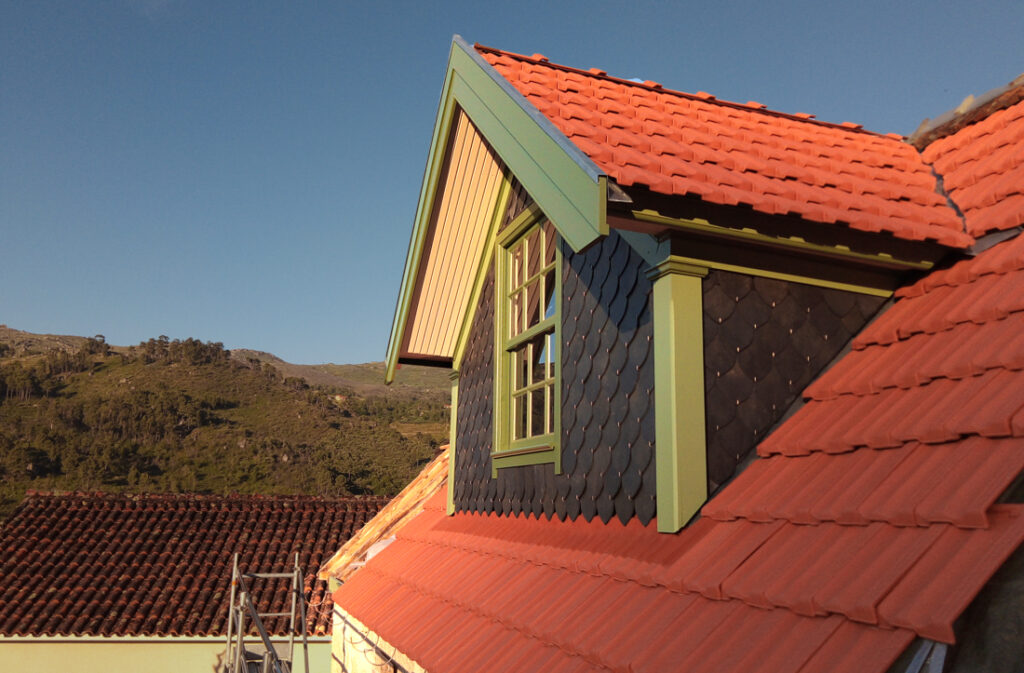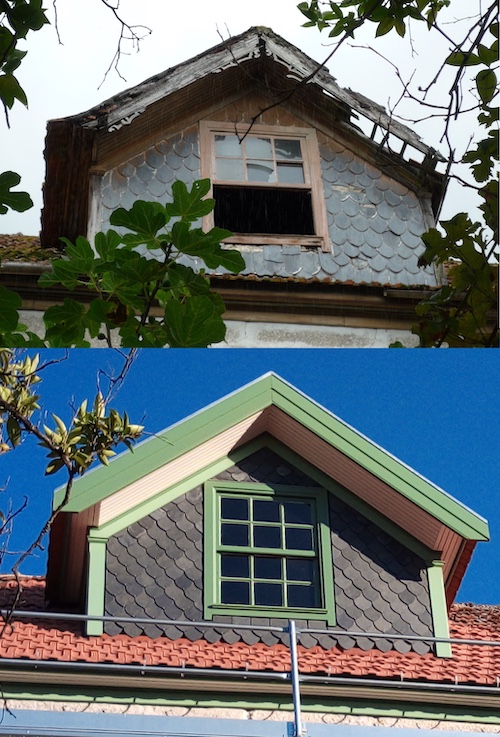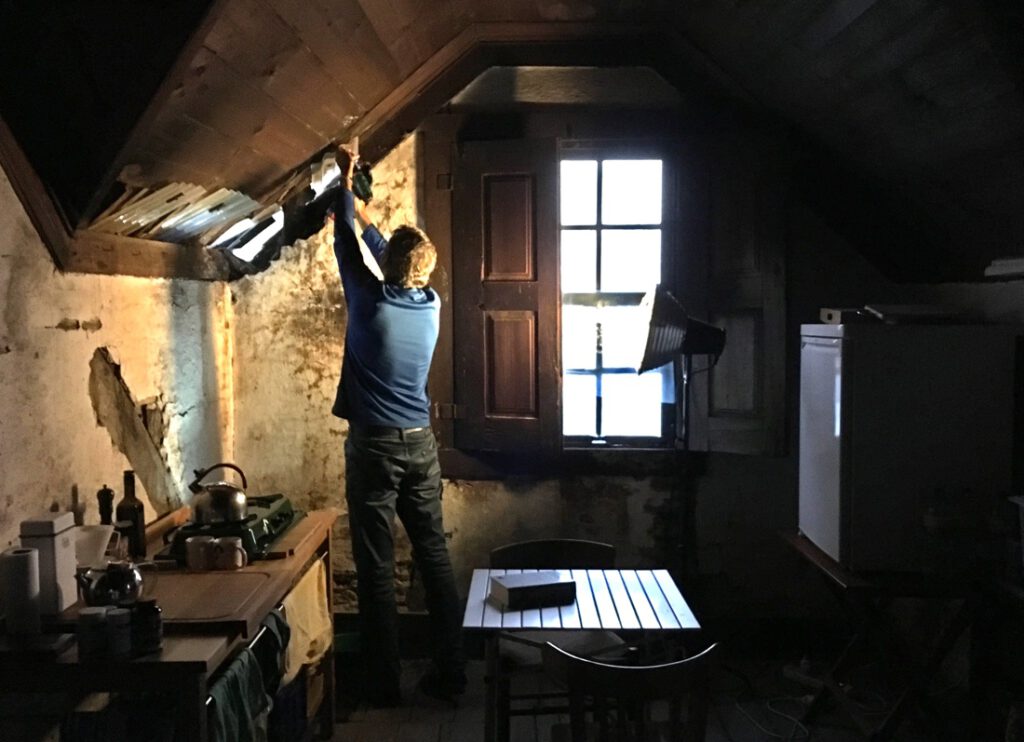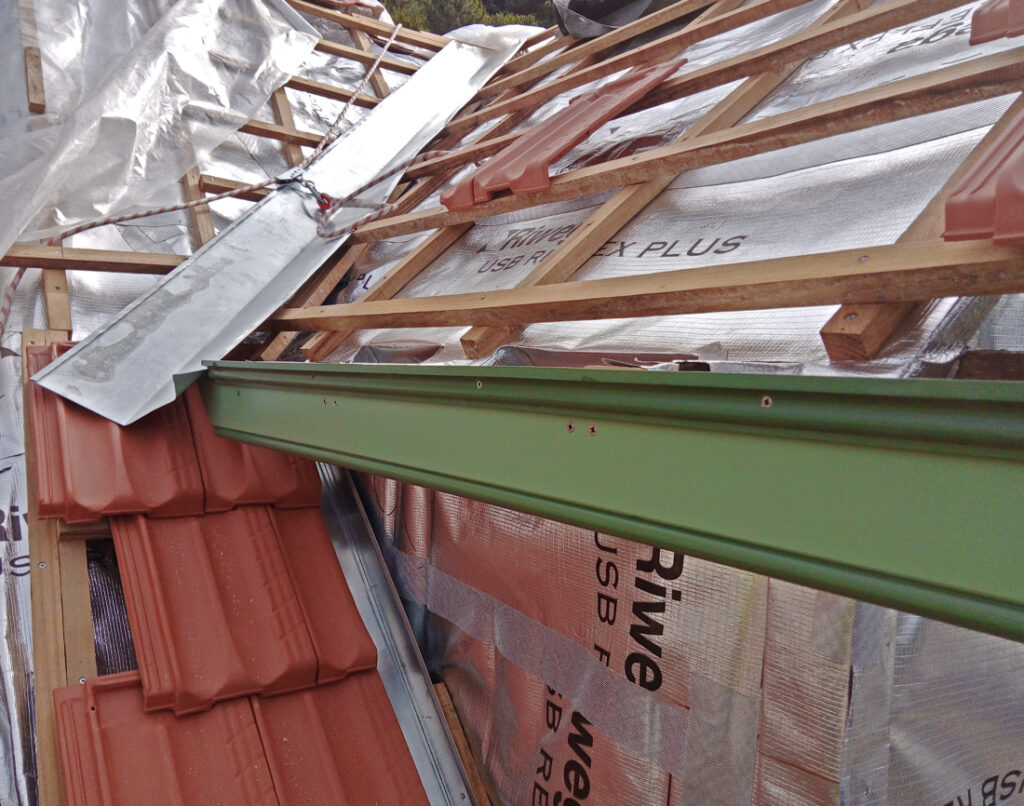When I look up, I can’t believe that Nuno and I renovated this dormer ourselves. Look at that! With so many things we’d never done before! We’re very pleased with the result and it gives us a lot of confidence for the remaining roof. Although that’s still a huge job and a lot of work for two hobbyists.
Unusual things
Our goal is to restore the old glory of the house.
This does not always make it easy, however, as some parts are so rotten that it is quite a puzzle to find out how they were made and how we can restore them. Many of the original materials are no longer common in Portugal, even simple things like wood. If we ask for wooden battens they look at us oddly. Or as the local tile supplier said: “You always ask for such unusual things!”.
Consequently, we spent weeks looking on the internet for the things we needed. We found wooden battens, zinc gutters and dry soakers in Portugal. But we ordered the rest online in Spain. Things like vapour permeable membrane, leadax, ridge rolls, hip vent system, ridge clamps, nail-tape… Not an unusual list for repairing a wooden roof, is it?

Original state
We get the impression that since 1987, when the house was no longer inhabited, nothing has been maintained. The wood has not been painted, blown-off roof tiles have not or too late been repaired. Birds, bats, lizards and mice have had free rein. As a result, the wood of the floors, the doors and the windows deteriorated, rain seeped through the house and moisture penetrated all wooden parts. And thus became a perfect habitat for woodworms and beetles.
The large dormer that we just finished, was one of the worst places. On the inside was a large black mouldy patch. When we camped in the attic during the first year, we managed to fix the worst leaks with pieces of corrugated sheeting. But there was still some seepage from the outside.
When we started dismantling the dormer last year, we were therefore afraid that the entire roof structure needed to be replaced. To our surprise, part of it was still quite good and strong. That must be due to the fact that the original roof could ‘breathe’, and moisture could evaporate from the roof structure.
All the more reason not to change so much compared to how the roof was once built. Thus, not applying a thick layer of insulation (also because we want to preserve and renovate the original panelling on the inside), but only a breathable membrane. This membrane blocks water from the outside but allows vapour to escape.
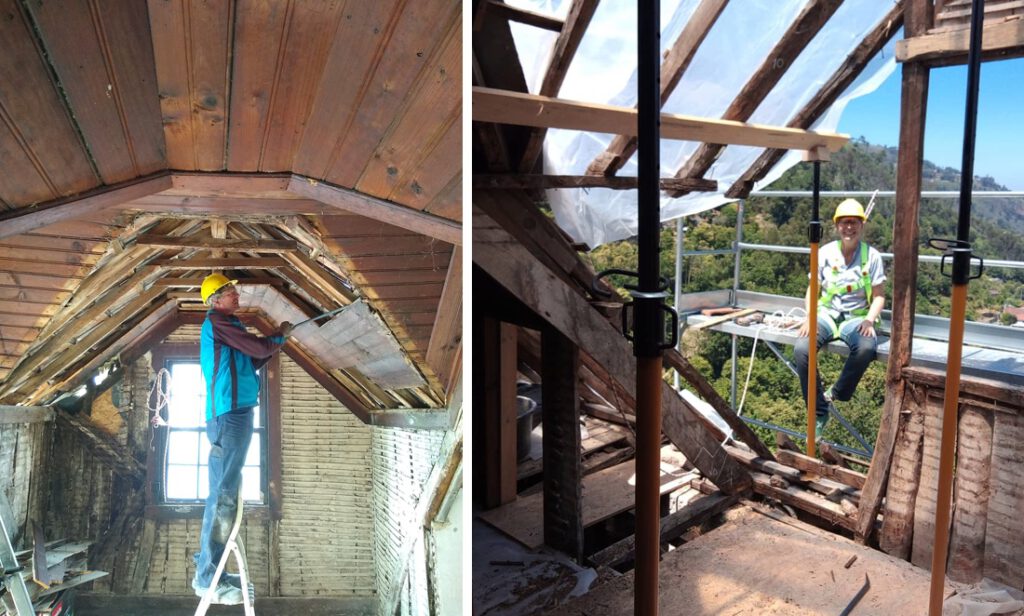

But the membrane makes the roof slightly different from the way it was. Moreover, the size of the new tiles is slightly different. This makes it impossible to “simply” copy the original. And there are many things we have never done before. We’ll spare you the details of the endless discussions, searches, tests and why we had to redo a whole field of battens!
In moments like these, we are fortunate to have a good aid: our supervisor. This is Maarten, Dona Rolha’s father, who in his working life worked as a carpenter in construction. His practical knowledge and many years of experience have often helped us move forward.
The local carpenter also helped us by making all the decorative laths, ventilation laths, fascias and parts I don’t know the English word for, exactly like the originals. Only the ornamental gable of the dormer was not copied. We couldn’t work out how to do it, and to be honest, we find it a bit fiddly too ;-).
As I write this, Portugal is undergoing its first heat wave of the year. The temperature rises in the afternoon to ±35˚C! That is no temperature for roof work, but soon we hope to resume the second part of the job. To do this, we first need to take down the scaffolding and rebuild it along a different façade.
And then the process begins all over again: take down the tiles, strip the battens, replace the rotten parts of the roof structure, clean them, woodworm treatment, place the membrane, fix the battens, finish the eaves and lay new tiles. It will be a while!
To not lose heart, we take a look every now and then, to see how beautiful it is becoming:
